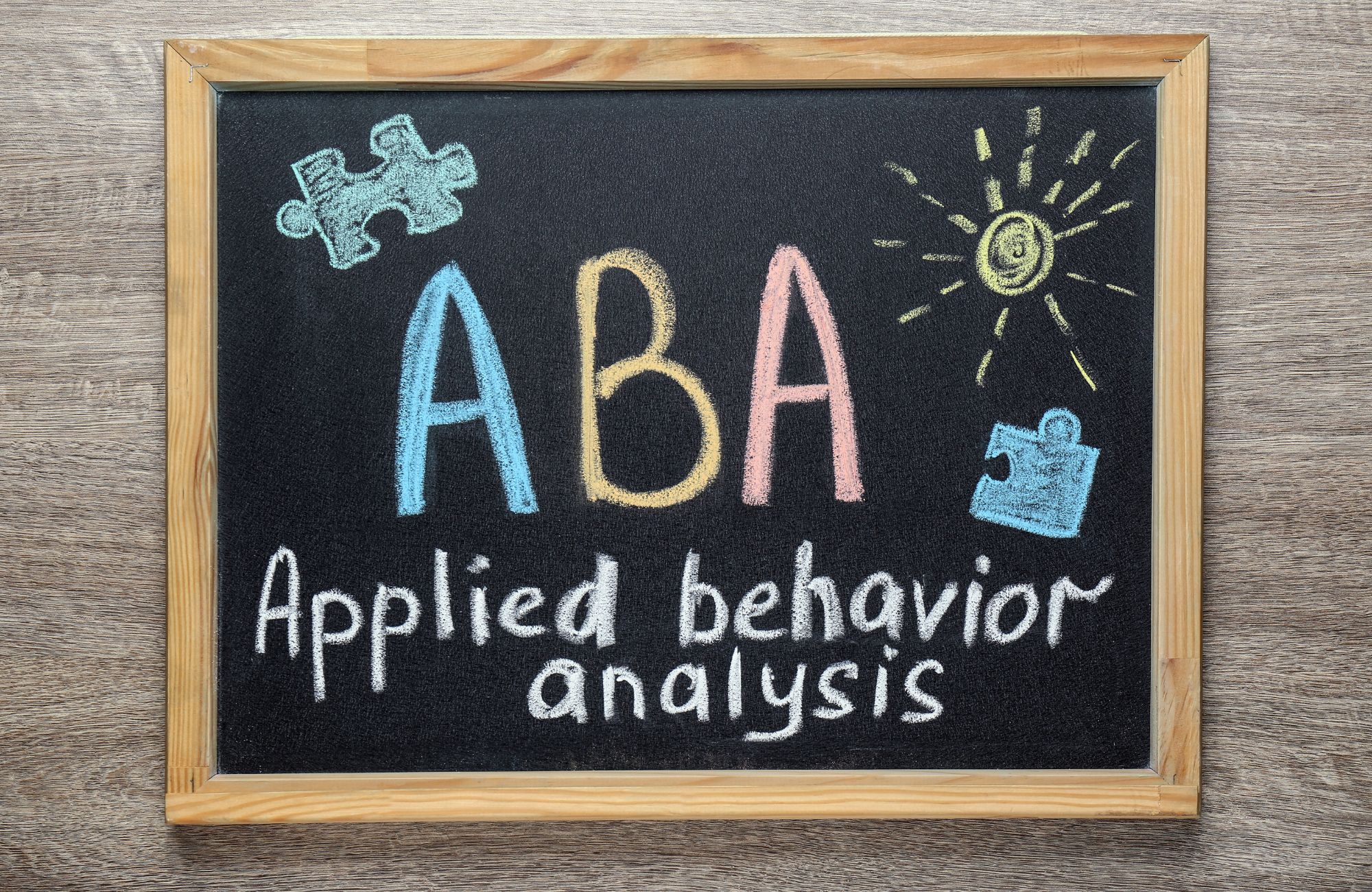Introduction to Applied Behavior Analysis
Applied Behavior Analysis (ABA) is a scientifically validated approach to understanding and changing behavior. It is widely used to support individuals with Autism Spectrum Disorder (ASD) and other developmental disorders, providing structured, evidence-based interventions. ABA therapy focuses on identifying specific behaviors, analyzing them, and using interventions to promote positive behavior change.
The primary goal of ABA therapy is to improve daily living skills, social skills, and reduce problem behaviors. ABA therapists work with individuals to develop individualized treatment plans tailored to their unique needs and goals. The therapy is grounded in principles of behavior analysis and uses a data-driven approach to make continuous improvements.
If you’re passionate about helping others improve their lives, especially those with ASD or behavioral disorders, becoming an ABA therapist is an incredibly rewarding career path. This guide will walk you through the steps required to get certified and begin your career in ABA therapy.
Education Requirements for ABA Therapists
To become a certified ABA therapist, you will first need to meet certain educational requirements. Aspiring ABA therapists typically begin with a Bachelor’s degree in a related field such as psychology, education, or behavior analysis. This foundational education provides the necessary understanding of human behavior and the principles of learning and development.
Bachelor’s and Master’s Degree Programs
While a Bachelor’s degree can get you started, many ABA therapists pursue a Master’s degree in Applied Behavior Analysis or a related field to advance their career and obtain certification as a Board Certified Behavior Analyst (BCBA). BCBA certification is a key milestone in the career of an ABA therapist, often required by employers for advanced positions.
- Bachelor’s Degree: Key coursework includes psychology, developmental disabilities, and general education about behavioral disorders.
- Master’s Degree: A more specialized program focusing on advanced ABA techniques, research methods, and behavioral assessment strategies.
Coursework and Practical Experience
In addition to classroom education, supervised practical experience is critical. ABA programs typically include an internship or practicum component, where students work under the supervision of a BCBA. This hands-on training ensures that aspiring ABA therapists gain practical skills required for effective therapy sessions.
Career Path for ABA Therapists
The career path for an ABA therapist usually starts with a role as a behavior technician or assistant, where you work under the direct supervision of a BCBA. Over time, as you gain experience and further your education, you can move into more advanced roles, eventually becoming an independent practitioner.
Advancement Opportunities
With a Master’s degree and BCBA certification, ABA therapists can qualify for leadership roles, such as supervising other therapists, developing treatment plans, and working in higher-level clinical positions. Many therapists choose to specialize in areas like autism treatment, developmental disabilities, or behavioral disorders.
- Entry-Level: Start as a behavior technician or assistant, gaining supervised experience.
- Mid-Level: Progress to roles such as BCBA or therapy supervisor.
- Advanced: Take on leadership or independent practitioner roles, providing supervision and direction for other therapists.
Experienced ABA therapists can also pursue specialized training or doctoral-level certifications such as BCBA-D (Doctoral-level certification in behavior analysis), for additional career growth.
BCBA Certification Process
Becoming a Board Certified Behavior Analyst (BCBA) involves completing a series of steps designed to ensure you have the necessary education, experience, and skills.
Step 1: Earn a Master’s Degree in ABA
To qualify for the BCBA exam, you must first earn a Master’s degree in Applied Behavior Analysis or a related field. This program provides the theoretical and practical foundation for practicing ABA therapy.
Step 2: Complete Supervised Experience
Once you’ve completed your coursework, the next step is to gain supervised practical experience. This typically involves working with clients under the supervision of a certified BCBA for a set number of hours (usually 1,500 to 2,000 hours).
Step 3: Pass the BCBA Exam
The BCBA exam assesses your knowledge in various areas of behavior analysis, such as assessment, intervention strategies, and ethics. The exam is rigorous and requires an in-depth understanding of ABA techniques and their application.
Step 4: Continuing Education
The Behavior Analyst Certification Board (BACB) requires BCBA-certified professionals to complete continuing education to maintain their certification. This helps ensure that BCBAs stay up-to-date with the latest research and best practices in ABA therapy.
Benefits of BCBA Certification
Obtaining BCBA certification comes with a variety of professional and personal benefits, including:
- Higher Salaries: BCBAs are in high demand and are often compensated more than non-certified professionals.
- Increased Job Opportunities: Many employers require BCBA certification to practice as an ABA therapist, particularly in higher-level roles.
- Professional Credibility: Certification from the Behavior Analyst Certification Board (BACB) signals to employers and clients that you are highly trained and committed to the field.
- Career Growth: BCBA certification opens up opportunities for leadership roles, specialized training, and further educational advancement.
Choosing an ABA Program
When selecting an ABA program, there are several factors you should consider to ensure you choose the best fit for your career goals:
Accreditation and Curriculum
Ensure the program is accredited by the Association for Behavior Analysis International (ABAI) or offers a Verified Course Sequence (VCS), which meets the BCBA certification requirements. The program should also offer courses that align with BCBA exam content, focusing on the key areas of behavior analysis.
Supervised Practical Experience
Look for programs that offer ample opportunities for supervised practical experience. Hands-on training under the supervision of a certified BCBA will provide the necessary skills to work with clients and design effective treatment plans.
Faculty Expertise
Consider the experience and qualifications of the faculty members. Experienced instructors who are themselves certified BCBAs will provide invaluable insights and mentorship throughout your education.
ABA Techniques and Strategies
ABA therapy uses various techniques and strategies to promote positive behavior change. These are rooted in behavior analysis principles, which focus on modifying observable behaviors through reinforcement and other interventions.
Key ABA Techniques Include:
- Positive Reinforcement: Encouraging desirable behavior by rewarding it.
- Prompting: Using cues or hints to help individuals perform tasks.
- Reinforcement Schedules: Timing the delivery of rewards to increase the frequency of desired behaviors.
- Functional Behavior Assessment: Identifying the reasons behind certain behaviors to tailor interventions.
These techniques are highly individualized, with therapists adapting their approach based on the unique needs of each client.
The Role of an Applied Behavior Analyst
An Applied Behavior Analyst (ABA) is responsible for assessing, designing, and implementing individualized treatment plans for clients. ABA therapists help individuals with behavioral disorders, including autism, develop essential skills and reduce problem behaviors. They often work as part of a multidisciplinary team, collaborating with speech therapists, occupational therapists, and other healthcare providers.
ABA therapists monitor client progress through continuous assessment and data collection, adjusting treatment plans based on real-time results. Their ultimate goal is to promote independence, self-advocacy, and improved quality of life for their clients.
Working with ABA Therapists
Effective communication and collaboration are key when working with ABA therapists. Therapists need to interact with clients, families, and other professionals to implement personalized treatment plans. They must also be flexible and adaptable, as therapy needs may change over time.
Training and ongoing professional development are vital for ABA therapists to stay up-to-date with the latest research and interventions in the field. This ensures that they are always providing the most effective services to their clients.
Overcoming Challenges in the Field
Like any profession, ABA therapists may face challenges in their careers. Some of the common obstacles include limited resources, a lack of awareness about ABA therapy, and high staff turnover rates. However, ABA therapists can overcome these challenges by being adaptable, continuing their education, and seeking support from colleagues and professional organizations.
Staying informed about new research and techniques in behavior analysis is crucial for overcoming these challenges and providing the best possible care for clients.
Continuing Education for ABA Professionals
Continuing education is essential for all ABA professionals. The BACB requires BCBAs to complete continuing education courses to maintain their certification. Fortunately, there are many ways to fulfill these requirements, including online courses, workshops, and professional conferences.
Staying current with new developments in ABA therapy ensures that professionals provide evidence-based and effective interventions.
Professional Development Opportunities
ABA professionals have many opportunities for career growth. These may include:
- Specialized training and certifications in specific areas, like autism treatment or developmental disabilities.
- Leadership roles, such as supervising other therapists or managing ABA programs.
- Networking and mentorship opportunities that foster professional growth and help therapists stay engaged in the broader field.
State Licensure Requirements
State licensure requirements for ABA therapists vary by region, with some states requiring BCBA certification for licensure or to practice legally. It’s important to research state-specific requirements to ensure eligibility to work as an ABA therapist in your area.
Average Salary and Job Outlook
The demand for ABA therapists is growing, with a strong job outlook in various settings such as schools, private practices, and clinics. The average salary for a certified ABA therapist varies depending on factors such as location, experience, and certification level. On average, BCBA-certified professionals earn higher salaries compared to non-certified therapists.
Conclusion
Becoming a certified ABA therapist involves education, practical experience, and a commitment to lifelong learning. It is a highly rewarding career that makes a profound impact on the lives of individuals with autism and other developmental disorders. With the right training, certification, and ongoing professional development, ABA therapists can provide life-changing services and continue advancing their careers in this growing field.
At Affinity ABC, we know that becoming a certified ABA therapist is a rewarding journey that requires dedication, education, and hands-on experience. Our team of experienced professionals is here to guide you through every step, whether you’re just starting your career or advancing your expertise. If you’re ready to make a meaningful impact in the lives of individuals with developmental disorders, contact us today to learn how Affinity ABC can support your growth and professional development in the field of ABA therapy.
FAQs
How do I become an ABA therapist in the USA?
To become an ABA therapist in the USA, you typically need a Bachelor’s degree in a related field, such as psychology or education. Afterward, you can pursue BCBA certification by completing a Master’s program in Applied Behavior Analysis, gaining supervised experience, and passing the BCBA exam.
Is ABA therapy free in the USA?
ABA therapy is not universally free. However, it may be covered by health insurance for individuals diagnosed with autism or developmental disorders. Medicaid and certain private insurance plans often cover ABA services, but coverage can vary depending on the provider and state.
How much does ABA therapy cost in the US?
The cost of ABA therapy can range from $120 to $200 per hour, depending on the provider, location, and whether the therapy is delivered in-home or at a clinic. Many families rely on insurance to offset the cost of therapy sessions.
How long does it take to get BCBA certification?
Becoming BCBA certified typically takes 2 to 3 years. This includes completing a Master’s program in ABA, gaining supervised experience, and passing the BCBA exam. The exact time can vary depending on the individual’s education pace and experience level.









